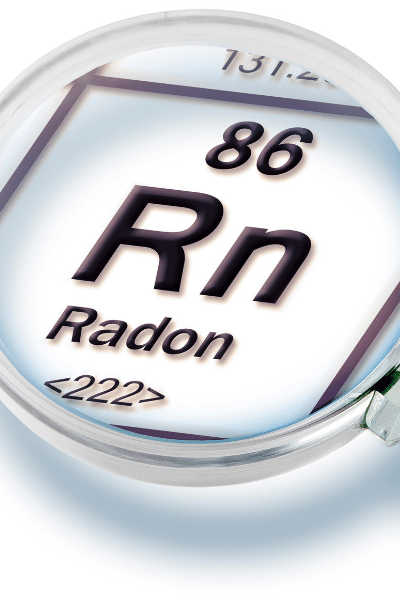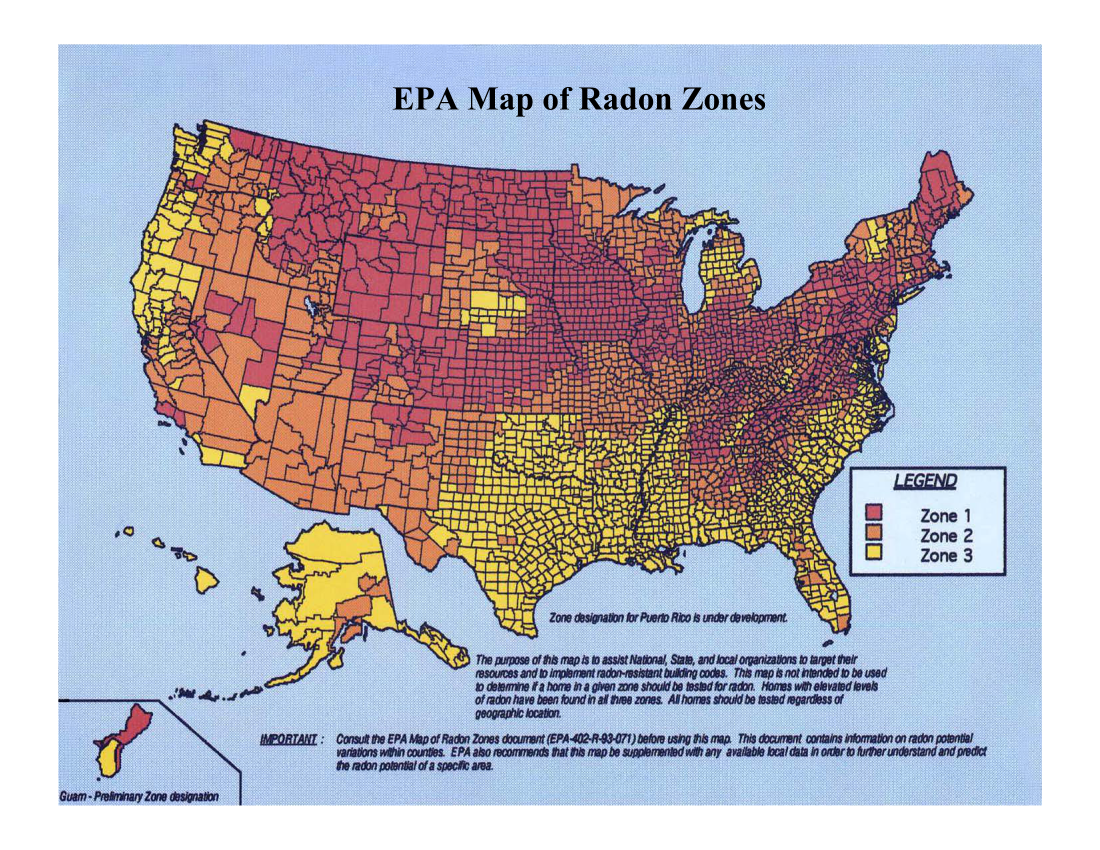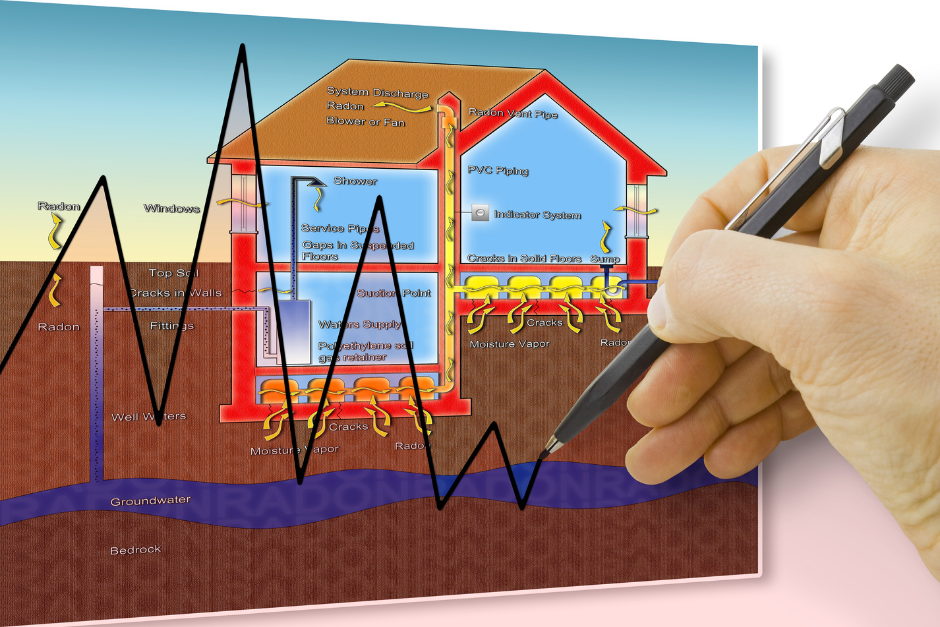
Iowa routinely ranks among the states with the biggest radon problems. The high radon concentrations are not limited to just part of the state, either. Iowa is one of the only states in which every county is in the EPA’s radon zone 1, the level with the highest potential for dangerous levels of radon. That is why it is important that you have your Council Bluffs home tested for radon and, if high levels are found, have a professional implement a radon mitigation system.
At Jerry’s Waterproofing, we are qualified in radon mitigation with licenses in both Iowa and Nebraska. Contact us today if your home or business has radon problems.
Frequently Asked Questions About Radon Mitigation
What is Radon?
Radon is a colorless, odorless gas. It is also always radioactive. The most stable version, Radon-222, is the one that is most likely to escape the rocks underground where it forms and cause problems for people.

Where Does Radon Come From?
Radon is part of the decay chains for uranium and thorium. This means that as uranium and thorium decay, they eventually become radon for a time before decaying further. These substances, especially uranium, are abundant enough in the earth to cause high levels of radon is some portions of the United States.
How Much Radon is Safe?
While any amount of radon will produce some dangerous radioactive particles, the EPA recommends implementing radon mitigation in any building with levels above 4 pCi/L. It also suggests considering it in any building with readings between 2-4 pCi/L. Readings above 4 especially pose significant lung cancer risks. These risks are higher for smokers but are significant for non-smokers as well. Roughly 21,000 deaths are attributed to radon every year. This makes it the second leading cause of lung cancer deaths behind smoking.

How Does Radon Enter My Home?
Since the uranium decays into radon within the soil, the most likely place for it to reach high concentrations is the lowest floor of a home, such as a basement in houses with them. It enters through cracks or holes in your basement floor or walls where they are in contact with the soil. In homes without basements, it could still enter either through a crawl space, if one exists, or through cracks in a slab foundation.
Radon Mitigation Services for Council Bluffs
The most commonly used method for radon mitigation is a Sub-Slab Depressurization (SSD) system.
We install a fan and PVC pipe to draw air from below the sub-flooring. The fan creates a vacuum under the sub-flooring. The system vents the air, including the radon, outside to a place that is away from any doors or windows. This keeps it from reentering your home.
We can normally complete installation of this system in less than a day.
We also test homes for radon to determine if there is a need for mitigation.
Searching for Radon Mitigation Specialists Near You in Council Bluffs? Contact Us Today
Our team of licensed radon mitigation specialists can help keep radon out of your home and prevent it from causing lung cancer or respiratory issues. If you are seeking a radon specialist in the Council Bluffs, Iowa, area, contact us today.



